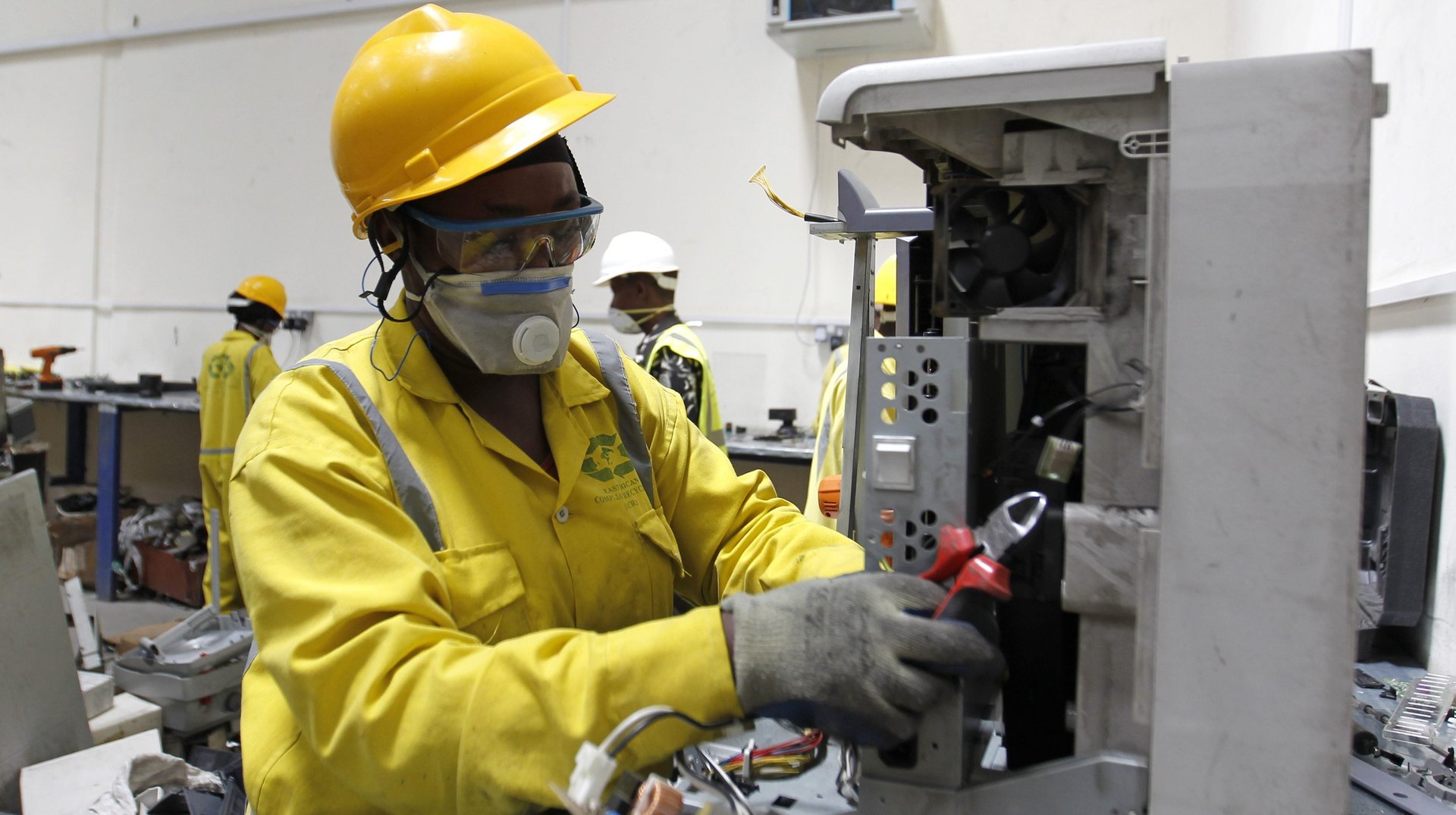Technology will drive scientific progress in Africa not the other way round
The future of the African youth in the world of science and technology is increasingly being recognized. In his optimistic prognosis, the president of the University of Cambridge, Leszek Borysiewicz says Africa’s talented youth “will drive the science and technology agenda of the future.”


The future of the African youth in the world of science and technology is increasingly being recognized. In his optimistic prognosis, the president of the University of Cambridge, Leszek Borysiewicz says Africa’s talented youth “will drive the science and technology agenda of the future.”
Realizing this vision, however, will require Africa to rethink its approach to science and technology education. Most of Africa’s science and technology policies still focus on the outdated view that the continent needs to start with doing its own basic research which will in future lead to products that can then be deployed in the economy.
This outdated linear view leads to uncritical conference resolutions requiring that 1% of the GDP of member states be allocated to research and development (R&D). The basic assumption is that science leads to technology.
There is however, ample evidence to suggest that in Africa’s case a more viable approach would be to start with deploying existing technologies. It is through such a practical process that a more relevant research is likely to emerge. This is not to say that basic research is not relevant. To the contrary, its relevance is enhanced when it is linked directly to efforts to solve daily problems.
Let us take look at three examples in telecommunications, transportation, and health. Africa’s leadership role in the adoption of mobile technology illustrates the importance of starting with technology as foundation basic research. Mobile phones were not invented in Africa.
But Africans have put them to novel uses, many of which are now triggering the need for basic knowledge in fields such the physics behind product design and the mathematics underlying algorithms. These are becoming essential in the development of apps aimed at solving African problems such as streamlining traffic flows and expanding mobile banking.
In transportation, it is one thing for African scientists to conduct basic research in material sciences. But the quickest way to build up such competence might be through the vast infrastructure investments that are being made across the continent.
In 2010 the World Bank estimated Africa needs “$93 billion a year (about 15% of the region’s GDP). Some two-thirds of this total relates to capital expenditure, and the remaining one-third to operation and maintenance. The construction and maintenance of such projects under diverse ecological conditions will require investment in basic research on local conditions and applications.
It is through such research that Africa will start to define its problem-focused research agenda. The quickest way to build capacity in engineering and the associated basic sciences is to link institutions of higher learning to infrastructure investments.
The same logic applies in the field of medicine. The burden of disease in Africa remains one of the most enduring challenges to the continent’s growth. The problem is worsened by the specter of emerging infectious diseases. The future of African biomedical research might lie in building close links between medical care that is offered in hospitals and basic research that goes on in national labs.
The common separation between the two weakens both health care and medical research. This could be addressed with the expansion of teaching hospital that combines research, instruction as well as product development and commercialization. Like in the case of telecommunications and transportation, the use of existing technologies to solve persistent problems should be the entry point.
Pursuing this approach will require a focus on four strategic approaches. The first is a long-term vision that emphasizes the use of existing knowledge. Fortunately, this vision has already been outlined by the African Union in its Science, Technology and Innovation Strategy for Africa, 2024 (STISA-2014) that was adopted in 2014.
The second is an appreciation of the exponential nature of science and technological advancement. It is estimated that scientific and technical knowledge doubles in less two years. This dazzling output of technical knowledge has reached a point where searching for existing knowledge is a cheaper and more practical approach for Africa. In other words, search comes before research. This involves identifying emerging technologies and assessing their benefits and risks.
The third strategic area is building the capacity needed to absorb the abundant scientific and technical knowledge. One way to achieve this is to refocus sections of the higher education systems on engineering and medicine. But this requires a new breed of innovation universities that combine research, teaching, extension and commercialization. Many of them would need to be attached to centers of practice such as infrastructure projects, hospitals and farms.
The final strategic approach involves investment in technology-based entrepreneurship. The rise of digital technology hubs across Africa is clear sign of what the future could look like. Governments should be at the forefront of creating enabling environments for the emergence of technology-based enterprises in fields such as mobile technology, drones, 3D printing, gene editing to machine learning.
The common usage of the “science and technology” carries with it a linear view of the world that may not adequately reflects Africa’s current conditions, global technological opportunities and inspirational examples that show an alternative approach to development. Maybe the time has come for Africa reverse the order and focus on an alternative approach that starting with technology and moves to science. It is by doing so that Africa truly fashion its own approach that consistent with its realities and aspirations.
Calestous Juma is Professor of the Practice of International Development at Harvard Kennedy School and author of Innovation and Its Enemies: Why People Resist New Technology (Oxford University Press, 2016).